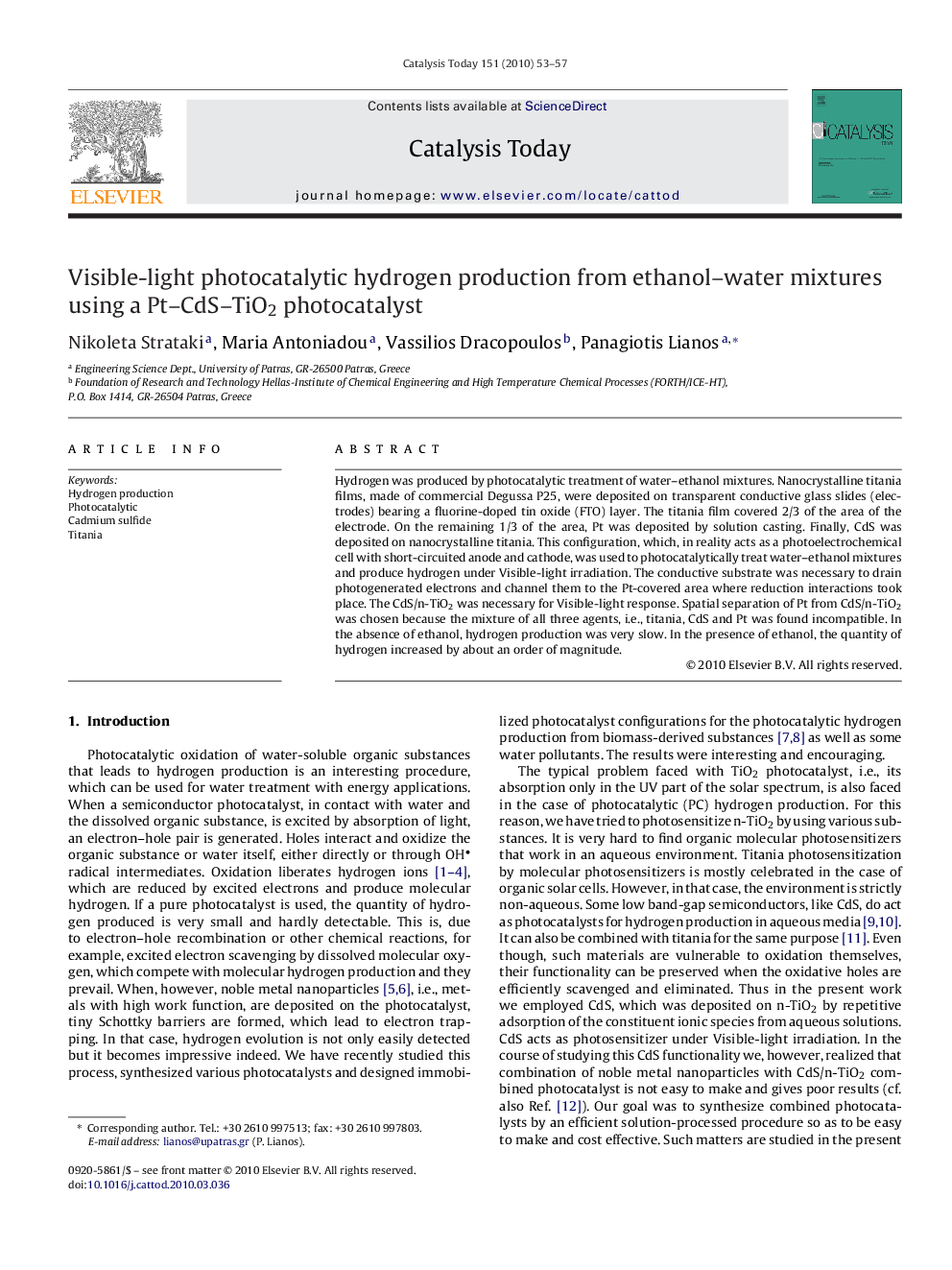| Article ID | Journal | Published Year | Pages | File Type |
|---|---|---|---|---|
| 56610 | Catalysis Today | 2010 | 5 Pages |
Hydrogen was produced by photocatalytic treatment of water–ethanol mixtures. Nanocrystalline titania films, made of commercial Degussa P25, were deposited on transparent conductive glass slides (electrodes) bearing a fluorine-doped tin oxide (FTO) layer. The titania film covered 2/3 of the area of the electrode. On the remaining 1/3 of the area, Pt was deposited by solution casting. Finally, CdS was deposited on nanocrystalline titania. This configuration, which, in reality acts as a photoelectrochemical cell with short-circuited anode and cathode, was used to photocatalytically treat water–ethanol mixtures and produce hydrogen under Visible-light irradiation. The conductive substrate was necessary to drain photogenerated electrons and channel them to the Pt-covered area where reduction interactions took place. The CdS/n-TiO2 was necessary for Visible-light response. Spatial separation of Pt from CdS/n-TiO2 was chosen because the mixture of all three agents, i.e., titania, CdS and Pt was found incompatible. In the absence of ethanol, hydrogen production was very slow. In the presence of ethanol, the quantity of hydrogen increased by about an order of magnitude.
